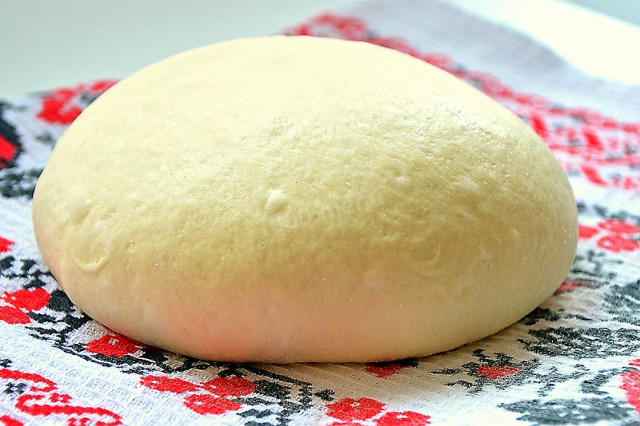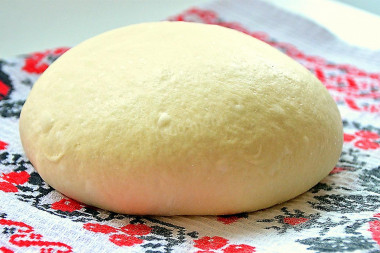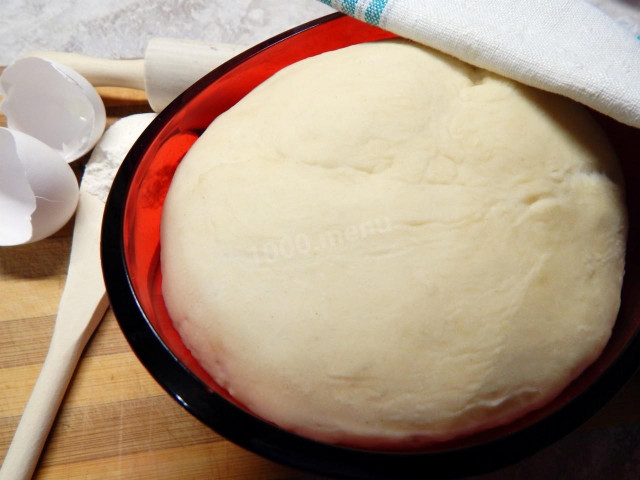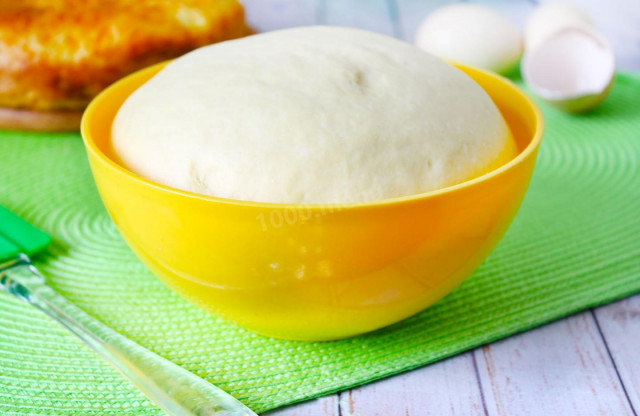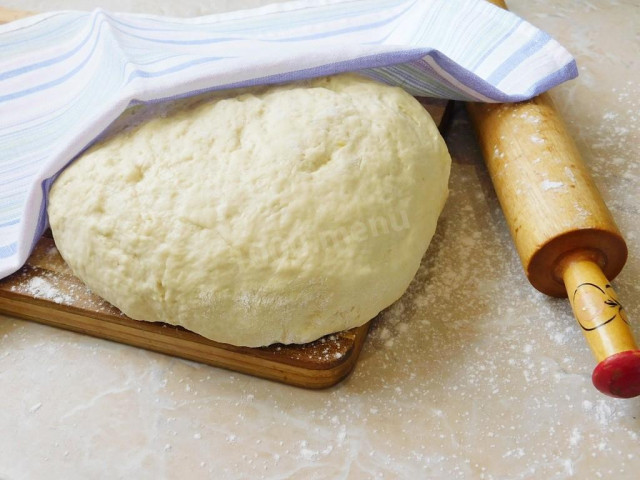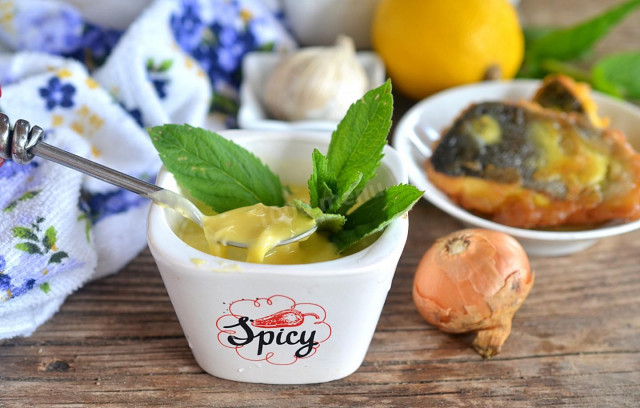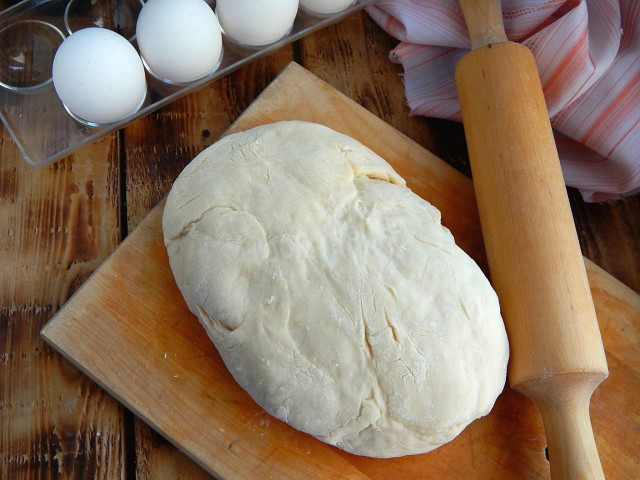Composition / ingredients
Step-by-step cooking
Step 1:

How to make sourdough dough? All the ingredients for the dough should be at room temperature, this is important. If it's cold in your kitchen, heat up the room with an oven. Prepare the ingredients according to the list. Check the yeast activity in advance so as not to spoil the products. Read about how to do this under the recipe description.
Step 2:
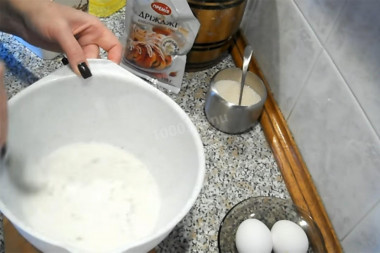
For sourdough, mix warm milk, yeast, a spoonful of sugar. Let the yeast dissolve completely.
Step 3:

Sift 2-3 tablespoons of flour into the dough and mix until smooth.
Step 4:
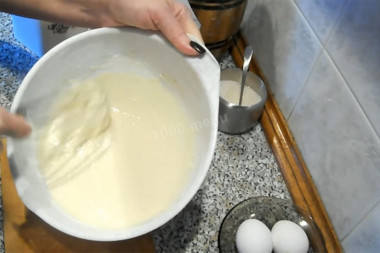
A sourdough with the consistency of liquid sour cream should turn out. If anything, add more flour. Cover the dough and put it in the heat for about half an hour.
Step 5:
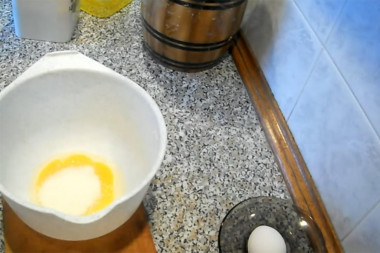
At this time, break the eggs into another bowl, add salt and the remaining sugar to them.
Step 6:

Beat the egg mass well. The extra air in the dough helps the yeast work better and makes the dough more porous. You can beat it as you like, with a mixer, fork, dough mixer. Melt the margarine separately and let it cool. Instead of margarine, you can use butter or vegetable oil.
Step 7:

Add the beaten eggs to the finished sourdough and mix gently. If the sourdough has not grown in half an hour, it means bad yeast and it is better to take others.
Step 8:

Sift some of the flour into the dough and start kneading. Do not add all the flour at once, because you may have less or more of it. Focus on the density of the dough itself.
Step 9:

Add the melted margarine to a fairly thick dough and mix.
Step 10:

Add flour in parts and knead the dough with a spoon, spatula or hands.
Step 11:
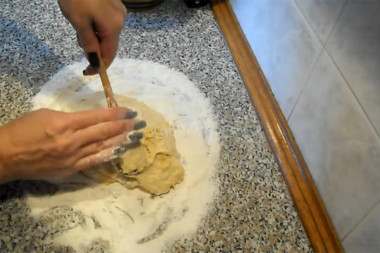
Then put the dough on the table with the rest of the flour.
Step 12:

Knead the smooth, slightly sticky dough diligently. Transfer it to a bowl, cover with a film or towel and leave for 1-1.5 hours in the heat.
Step 13:
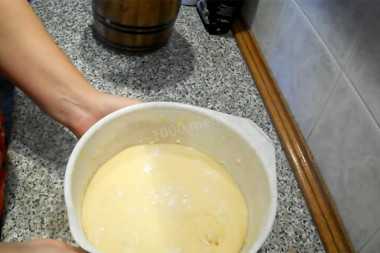
After increasing the test 2-3 times, you can work with it. From this you can make pies, make pies, rolls, buns, and other pastries. By changing the amount of sugar, you can make the sourdough dough more bland or sweet.
The liquid in which yeast is bred should be pleasant to the touch, no higher than 40 degrees. Why is this important? In a warm environment, yeast is well activated, in a hot one it will die, and in a cold one it simply will not work. To avoid unpleasant surprises, check the yeast before mixing with the rest of the ingredients. Pour a little warm milk into a bowl, stir in the yeast. Cover the bowl with a kitchen towel and put it in a warm place without drafts for 10-15 minutes. During this time, a foam yeast cap should appear on the surface of the sponge. If this did not happen, then the fermentation process has not started (the yeast is overdue or spoiled). In this case, it is worth taking other yeast, otherwise baking will not work.
Be prepared for the fact that flour may need more or less than indicated in the recipe. Focus not on the amount of flour, but on the desired consistency of the dough. To avoid mistakes, read about flour and its properties!
Caloric content of products possible in the composition of the dish
- Whole cow's milk - 68 kcal/100g
- Milk 3.5% fat content - 64 kcal/100g
- Milk 3.2% fat content - 60 kcal/100g
- Milk 1.5% fat content - 47 kcal/100g
- Concentrated milk 7.5% fat content - 140 kcal/100g
- Milk 2.5% fat content - 54 kcal/100g
- Granulated sugar - 398 kcal/100g
- Sugar - 398 kcal/100g
- Table margarine - 720 kcal/100g
- Cream margarine - 720 kcal/100g
- Milk margarine - 743 kcal/100g
- Low-fat margarine - 384 kcal/100g
- Sandwich margarine - 688 kcal/100g
- Margarine for baking - 675 kcal/100g
- Margarine dietary - 366 kcal/100g
- Margarine bold 40% - 415 kcal/100g
- Margarine - 720 kcal/100g
- Salt - 0 kcal/100g
- Wheat flour - 325 kcal/100g
- Chicken egg - 80 kcal/100g
- Dry yeast - 410 kcal/100g

